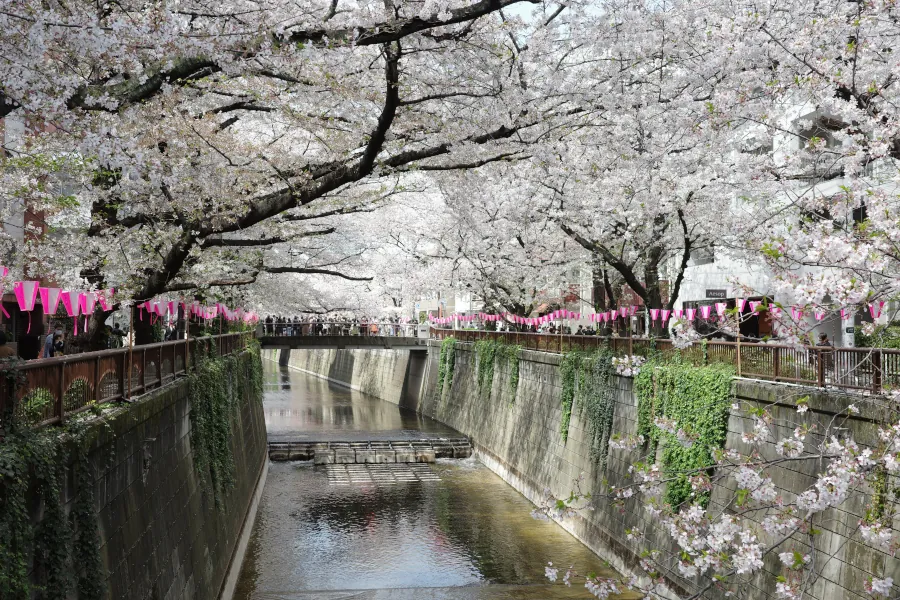
The culture of the Land of the Rising Sun, as the quintessence of beauty and elegance, attracts many passionate admirers from all over the world. Art, architecture, design, clothing, food, and even technology—Japanese people deeply value aesthetics in all of these aspects. A great example is the cherry blossom season in Japan, which initiates a «festival» called hanami. Japanese families and friends gather under the cherry blossom trees to admire the blooming flowers. This tradition originated in the 3rd century, although back then, people enjoyed the blooming of plum blossoms. Hanami has transformed into a unique Japanese philosophy, symbolizing the fleeting nature of human life, akin to the short-lived beauty of cherry blossoms. Therefore, one should savor every moment.
It also embodies the ability to slow down and feel a sense of unity with nature. Indeed, the appreciation of the grandeur of nature and finding beauty in simple everyday things permeate Japanese culture. We can learn from them in this regard, and it is these aspects that we hope to convey to some extent in our books about Japan.
Kimono is a word that has long found its place among the languages of the world and requires no translation. It refers to the traditional Japanese attire, which is still perceived as one of the most recognizable symbols of Japanese culture.
In the edition «88 Kimono Patterns», you will learn that the choice of pattern for a kimono depends on its purpose, age, and affiliation to a specific community of its owner. Many mons—heraldic symbols of aristocratic families—are incorporated into kimono patterns. However, the most significant factor is the correspondence to a particular season. It is customary to wear kimono with seasonal motifs a few weeks before the season begins and never after its conclusion. In general, the Japanese divide the year not only into four major seasons but a total of 24 seasons based on the solar calendar.
Another important aspect of matching clothing to the seasons is related to poetry. For over a thousand years, Japanese poets have competed in skillfully composing haiku and tanka poems. Regardless of the evolving forms of poetry, the key position is held by the so-called «seasonal word». The longstanding poetic tradition has established a catalog of words and images associated with each season, guiding the composition of relevant verses. Textile masters, like other artists, draw on this rich experience. Thus, the poetry of one of Japan's four great poets, Kobayashi Issa, beautifully complements our publication and allows us to fully appreciate this harmonious combination.
The attitude towards one's appearance in Japanese society has long been shaped by the samurai principle: «Impeccable appearance—impeccable spirit». This principle was meant to instill self-discipline and a desire to uphold high moral standards in individuals. The samurai believed that a person's physical cleanliness, neat appearance, and a costume that adhered to the code could purify the warrior's spirit, his mind, and cultivate in him a sense of compassion and respect for duty.
The Meiji era opened Japan to the world, and the world to Japan. Since then, this mutual interest has not diminished. Initially, the westernization of Japan occurred under conditions of complete idealization of the West, but gradually, as the Japanese embraced European culture, their attitude towards the «foreign» became more moderate. This allowed them to preserve their national traditions with minimal loss and incorporate European influences on their basis. New influences penetrated almost every sphere of Japanese society. The country, for example, began to explore foreign literature, primarily the popular works of French naturalism, which had a significant influence on many Japanese writers.
Tayama Katai was destined to become one of the most influential writers of his time, and his novel «The Quilt» is considered a milestone in modern Japanese literature. His name is closely associated with the flourishing of Japanese naturalism. We hope to gradually introduce you to many extraordinary characters and unusual works of the Land of the Rising Sun.
Despite the fact that Ukrainian language has been deeply influenced by the Ukrainianized Russian Polivanov system since Soviet times, in our Japanese publications, we use a modernized practical Ukrainian transcription of the Japanese language. It is important to implement and use a system created based on the Ukrainian language and go beyond the boundaries of the imposed linguistic field.